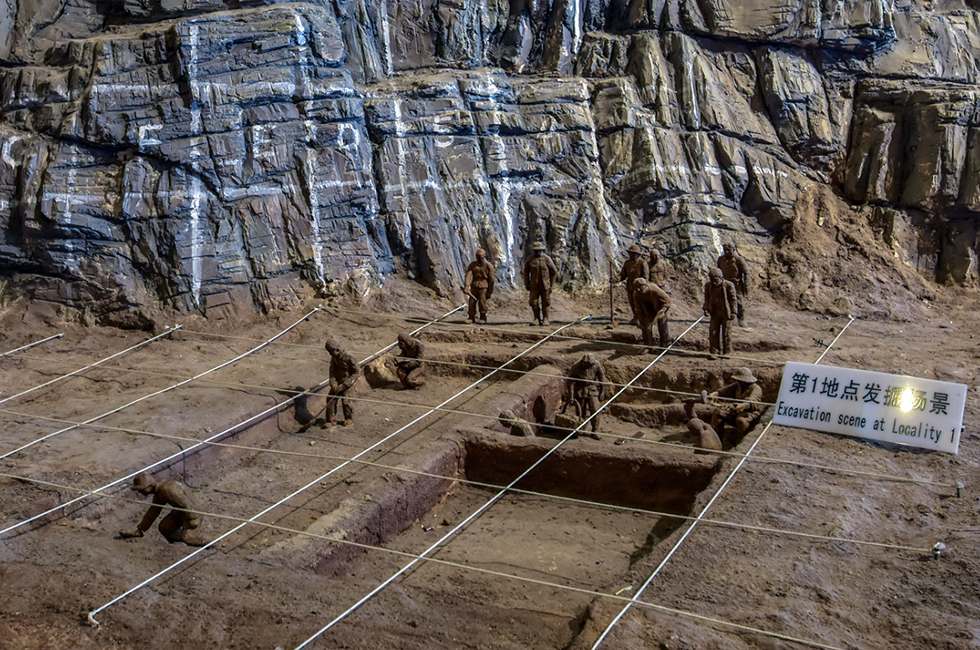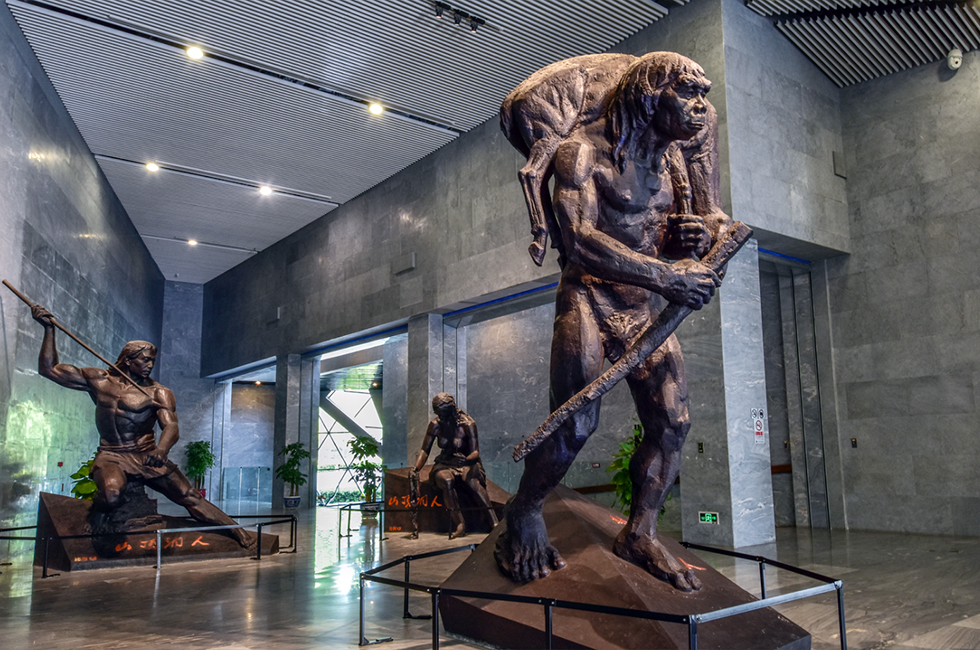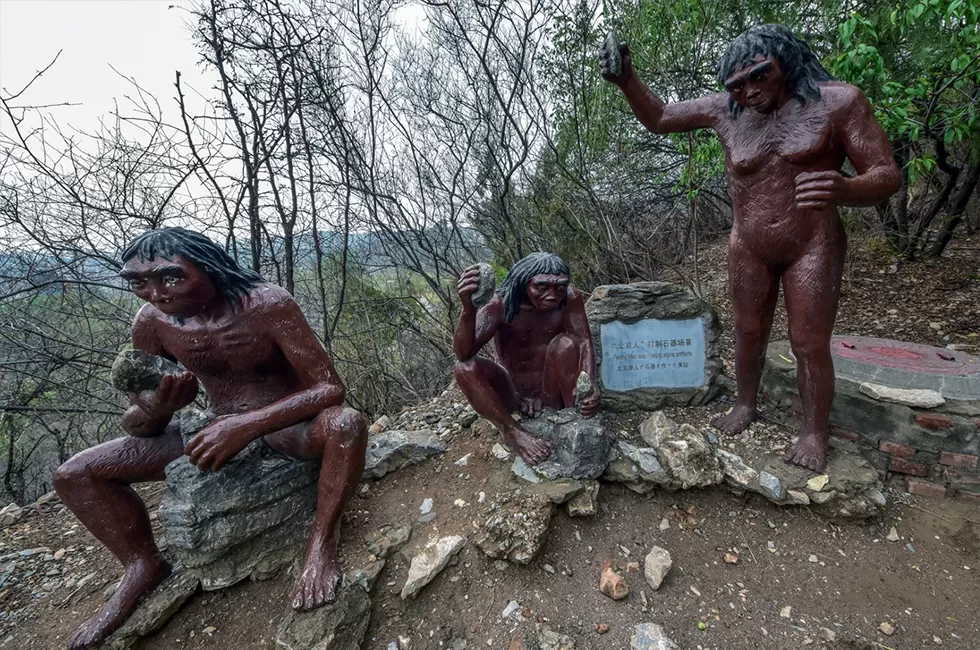Peking Man Site at Zhoukoudian
Facts of Peking Man Site at Zhoukoudian
- The Peking Man Site at Zhoukoudian is a UNESCO World Heritage Site.
- It is located in the suburbs of Beijing, China.
- The site contains the fossils of early humans belonging to the genus Homo, known as Peking Man.
- The fossils were first discovered in 1921 and belong to the Middle Pleistocene period, around 400,000 to 700,000 years ago.
- Peking Man is believed to be one of the earliest forms of human ancestors to use fire.
- The fossils were lost during World War II and have not been recovered.
- Excavations at the site have also uncovered the remains of various animals and stone tools.
- The Peking Man Site at Zhoukoudian provides valuable information about human evolution and cultural heritage.
World Cultural Heritage Site: Peking Man Site at Zhoukoudian (1987)
The remains of the Peking man, located at Dragon Bone Hill, Zhoukoudian, are 48 kilometers to the southwest of Beijing. Its location is at the joint of mountains and plain, with the North China Plain to its southeast and extending hills to its northwest. The mountains around Zhoukoudian are mainly limestone formations, which are honeycombed due to water erosion. Therefore, caves of various sizes are available. In the mountain, there is a cave that extends 140 meters in length, commonly referred to as the cave of Homo erectus. In 1929, the remains of Peking man were first excavated there. This cave was numbered Locality 1 of Zhoukoudian Site.
Zhoukoudian is an important site of the Paleolithic period in North China, among which the most famous is Locality 1 where remains of the Peaking man was excavated. In 1918, Swedish geologist Johan Gunnar Anderson found this site and started excavation work. In 1927, Canadian anatomist Davidson Black started official excavation work in Zhoukoudian Site, coming to discover three human teeth that were later officially named the teeth of the Peaking man. On December 2, 1929, Chinese archeologists excavated the first complete skull of the Peaking man. This discovery attracted worldwide attention in academia.

The excavations in Zhoukoudian Site have been carried out on and off for over 80 years, and currently, scientific study is still underway. Scientists have excavated 40 meters deep into Locality 1, but still far from half of the total size of the cave. Other sites from the same period do not compare to Zhoukoudian Site due to its large collection of fossil specimens, stone tools and mammal fossils excavated there. Also, the evidence of fire use is more captivating than that found in other sites.
The evidence of fire usage in Locality 1 of Zhoukoudian Site rewrote the history of fire use, estimated to be over 100,000 years ago. In the site, five layers of ashes were discovered, together with the remains of there piles of bone ashes. The layer is as thick as 6 meters. The evidence shows that the Peaking man could not only use fire but create fire manually.
In the site, thousands of stone tools were excavated and the materials for making these tools mainly derived from nearby hills. The stone tools were small generally, with a variety of vessels. The earliest tools were large and rough, most of which were used to break other stones. The latest were small, where stone awl is unique to this period.

The evidence of excavations shows that Peaking man used to live in and around Zhoukoudian 200,000 to 700,000 years ago, leading a life of hunting and gathering strategy. The earlier phase of their age is about 400,000 to 700,000 years ago, the middle phase 300,000 to 400,000 years ago, and the latest phase 200,000 to 300,000 years ago. The Peaking man were the primitive humans at the intermediate stage between ape men and Homo sapiens. The discovery of Peaking man is well known in fields of history, biology, and anthropology throughout the world.
The geologic age of Zhoukoudian Site is between the Early Pliocene and the Middle Pleistocene, from 100,000 to 5 million years ago. Over the course of history, the Peaking man lived there 200,000 to 700,000 years ago; the early Homo sapien, whose remains were excavated in the Locality 4, used to live there 100,000 to 200,000 years ago. The Tianyuan man 38,500 to 42,000 years ago; and the Upper Cave man around 30,000 years ago. Places where ancient people lived are commonly referred to as Zhoukoudian Site. It was there that a large amount of human fossils were excavated.
The disturbing fact is that the fossils found in the 1920s and 1930s were lost during the Pacific War in 1941. Most of them are still nowhere to be traced today. It remains one of the myths yet to be unveiled.
Cultural Heritages
The first skull fossil of the Peaking Man was excavated in 1966 under the instruction of Pei Wenzhong, a celebrated Chinese paleoanthropologist. It is the only existing piece of skull fossil of the Peaking man in China, since many others were lost or destroyed during periods of war.
A Discovery That Shocks the World
The discovery of the skull of the Peaking man contributed to the rising fame of Zhoukoudian as the origin of human life. After decades of excavation, 27 sites of fossils and cultural relics were discovered, together with over 40 remain fossils of the Peaking man, over 100,000 pieces of stone tools Among all sites from this period, it is the largest number of excavation discovery that is valuable scientifically. Today, it has become China’s scientific base for the interdisciplinary cooperation between archeology of the Paleolithic Period, paleoanthropology and Quaternary geology. In 1987, UNESCO placed it on the World Cultural Heritage List. The excavation work was resumed later after 72 years of suspension.

Open the First Chapter of Human History
As early as in the Paleolithic Period, the Peaking man had already mastered the techniques of using rocks to create stone tools, which served as weapons or tools of production. Since they were improving themselves in fighting against natural forces shows that they knew how to use primitive tools for survival activities.
Shift the Record of Fire Usage to a Much Earlier Date
In the cave where the Peaking man used to live, layers of ashes were discovered, which ranges from 4 to 6 meters. This shows that the Peaking man knew how to use and control fire. This is an important milestone when primitive man distinguished themselves from animals which preceded the development of human civilization.
Provide Evidence for the Changes in Beijing's Ecological Environment
The study of the Peaking man and the surrounding natural environment shows that the landform today is similar to that 500,000 years ago. The hills there used to be covered by thick verdant forests, home to a variety of animals. In the past, it was a vast grassland and desert. The traces of ostriches and camels can still be found today. Over the course of history climate in Beijing has shifted from warm and humid to cold and dry weather.
The study of the Peaking man and its culture offered an answer to a question that had been unsolved in the field of science since the discovery of the Java man which was whether the Homo erectus was a man or ape. Evidence shows that at the dawn of human history, there used to be an age of the Homo erectus, which was thought to be the descendent of the Australopithecus and ancestor of Homo sapiens. The Homo erectus was at the intermediate stage between ape man and the primitive man. The unique physique of the Homo erectus is said to be inherited from the Peaking man. Today Zhoukoudian Site remains the most valuable with the richest and the most systematic discoveries on all similar sites in the same time throughout the world. It deserves its reputation as a treasure trove of ancient cultural heritages.
What to see in the Peking Man Site at Zhoukoudian
The Peking Man Site at Zhoukoudian is a paleoanthropological site that contains the remains of early humans who lived in the region 400,000 to 700,000 years ago. Visitors can see:
- The exhibit hall showcasing the fossils and artifacts found at the site
- The excavation site where the remains were discovered
- The Museum of Human Evolution
- Replicas of the skull and limb bones of the Peking Man
- Artifacts such as stone tools and animal fossils
- A movie room that presents the history of human evolution
- A research center that studies human evolution and cultural heritage.
GREAT FAMILY CHINA TOUR
JULY 2024 We wanted to thank Grace at China Culture tour for organizing a great tour of China. We enjoyed our Beijing - Xian-Chengdu -Guilin -Yangshuo - Shanghai trip. Our local guides Bruce in Beijing, Susan in Xian, Jane in Chengdu, Mike in Guilin and Mary in Shanghai took care of us…read more details »
Teng Han L from SINGAPORE
Ready to Create a Unique Dream Travel?

